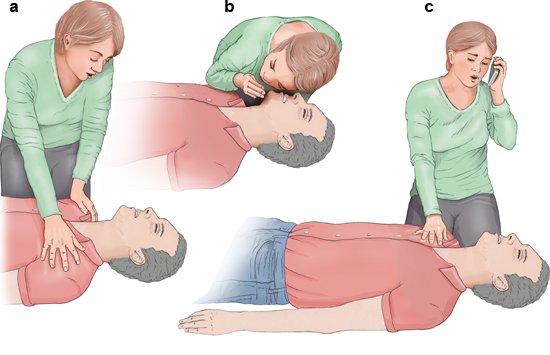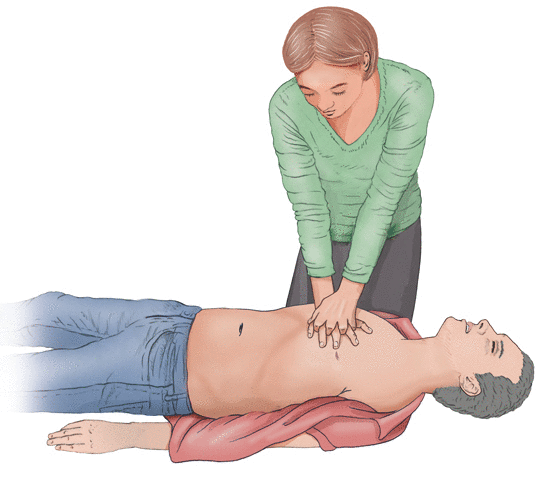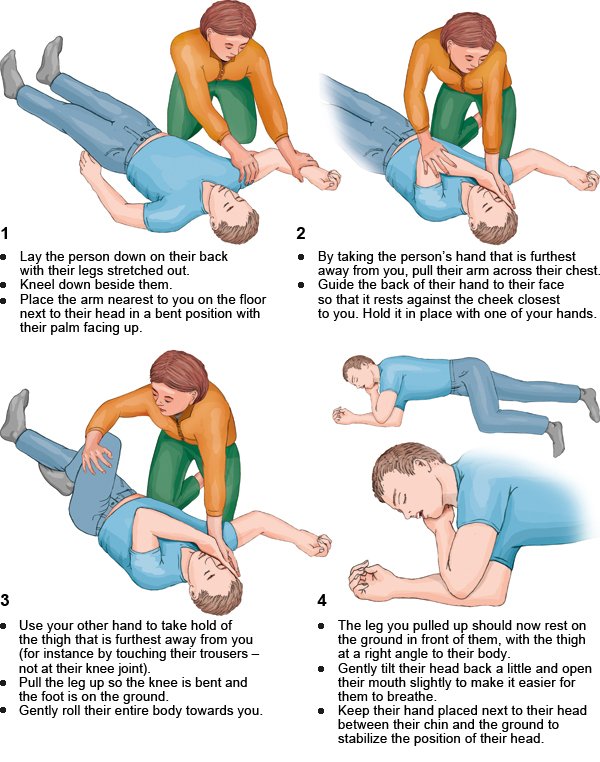1. |
Check whether the person is conscious and breathing normally. |
|---|---|
2. |
If they aren’t, call the emergency services (112 in Germany and many other countries, 911 in the U.S.). |
3. |
Start doing chest compressions. |
If you follow these three steps right away, you can’t go wrong. The most important thing is to start helping immediately! Don’t hesitate for fear of doing something wrong. Good to know: If you’re not trained in CPR, you don’t need to give rescue breaths. In this article we will only describe how to do CPR without rescue breaths (hands-only CPR).
If you have access to an automated external defibrillator (AED) and someone else is there to help, you can resuscitate the patient using that too. But make sure that you only stop performing chest compressions when the defibrillator device tells you to stop.



